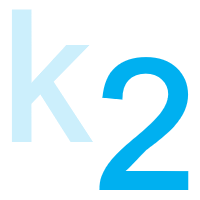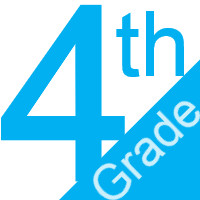4th Grade English
Completion requirements
 Prioritized Standards
Prioritized Standards
 Standards Glossaries
Standards Glossaries
| K Grade English | 1st Grade English | 2nd Grade English |
 Standards Glossaries
Standards Glossaries
| 3rd Grade English | 4th Grade English | 5th Grade English |
 Standards Glossaries
Standards Glossaries
| 6th Grade English | 7th Grade English | 8th Grade English |
 Standards Glossaries
Standards Glossaries
| 9th Grade English | 10th Grade English | 11th Grade English | 12th Grade English |
 Standards Glossaries
Standards Glossaries
| HS Journalism | HS Speech |
| (L) Language |
ELA-04.L.01ELA-04.L.01 Demonstrate command of the conventions of standard English grammar and usage when writing or speaking.Sub-Standards:
Introduce:
a. Rearrange complete simple and compound sentences of a variety of lengths.
b. Ensure pronoun-antecedent agreement. c. Explain and use linking verbs. d. Use verb tense to convey various times and sequences. e. Use relative pronouns (who, whose, whom, which, that). f. Use relative adverbs (where, when, why). g. Use correlative conjunctions (e.g., either/or, neither/nor). h. Use coordinating and subordinating conjunctions. i. Explain the function of coordinating conjunctions.
Practice:
j. Produce complete sentences, recognizing and correcting inappropriate fragments and run-ons.
k. Produce complex and compound-complex sentences. l. Use possessive nouns. m. Form and use the progressive (e.g., I was walking; I am walking; I will be walking) verb tenses. n. Form and use the perfect (e.g., I had walked; I have walked; I will walk) verb tenses. o. Use helping and modal auxiliaries (e.g., can, may, must) to convey various conditions. p. Resolve issues of complex of contested usage, consulting reliable references as needed.
Display proficiency in:
q. Ensure subject verb-agreement.
r. Produce compound sentences. s. Use regular plural nouns orally by adding /s/ or /es/. t. Form and use regular and irregular plural nouns. u. Use abstract nouns (e.g., childhood). v. Form and use regular and irregular verbs. w. Form and use comparative and superlative adjectives and choose between them depending on what is to be modified. x. Explain the function of an adjective. y. Form and use comparative and superlative adverbs and choose between them depending on what is to be modified. z. Form and use prepositional phrases. Student Learning Targets:Knowledge Targets
Reasoning Targets
Skills (Performance) Targets
Proficiency ScaleThe Student Will ...1 Beginning... with help, demonstrates a partial understanding of some of the simpler details and processes (Score 2.0 content) and some of the more complex ideas and processes (Score 3.0 content).Start 2 Developing... demonstrates no major errors or omissions regarding the simpler details and processes but exhibits major errors or omissions regarding the more complex ideas and processes (Score 3.0 content).Simple 3 Proficient“The Standard.”... demonstrates no major errors or omissions regarding any of the information and processes that were end of instruction expectations. Target 4 Advanced... demonstrates in-depth inferences and applications regarding more complex material that go beyond end of instruction expectations.Complex ResourcesVocabulary
Websites
| |||
ELA-04.L.02ELA-04.L.02 Demonstrate command of the conventions of standard English capitalization, punctuation, and spelling when writing.Sub-Standards:
Practice:
a. Use commas and quotation marks in dialogue.
b. Form and use possessives. c. Add prefixes and suffixes to base words (e.g., sitting, smiled, cries, happiness). d. Use a comma to separate an introductory element from the rest of a sentence.
e. Use underlining, quotation marks, or italics to indicate titles of works.
f. Spell grade-appropriate words correctly, consulting references as needed and/or using spelling patterns and generalizations (e.g., word families, position-based spelling, syllable patterns, ending rules, meaningful word parts).
Display proficiency in:
g. Use commas and quotation marks to mark direct speech and quotations from a text.
h. Use a comma before a coordinating conjunction in a compound sentence. i. Use punctuation to separate items in a series. j. Use a comma to set off the words yes and no (e.g., Yes, thank you), to set off a tag question from the rest of the sentence (e.g., It’s true, isn’t it?) and to indicate direct address (e.g., Is that you, Steve?). | |
ELA-04.L.03ELA-04.L.03 Use knowledge of language and its conventions when writing, speaking, reading, or listening.Sub-Standards:
a. Choose words and phrases to convey ideas precisely.
b. Choose punctuation for effect.
c. Differentiate between contexts that call for formal English (e.g., presenting ideas) and situations where informal discourse is appropriate (e.g., small-group discussion).
Student Learning Targets:Knowledge Targets
Reasoning Targets
Skills (Performance) Targets
Proficiency ScaleThe Student Will ...1 Beginning... with help, demonstrates a partial understanding of some of the simpler details and processes (Score 2.0 content) and some of the more complex ideas and processes (Score 3.0 content).Start 2 Developing... demonstrates no major errors or omissions regarding the simpler details and processes but exhibits major errors or omissions regarding the more complex ideas and processes (Score 3.0 content).Simple 3 Proficient“The Standard.”... demonstrates no major errors or omissions regarding any of the information and processes that were end of instruction expectations. Target 4 Advanced... demonstrates in-depth inferences and applications regarding more complex material that go beyond end of instruction expectations.Complex ResourcesVocabulary
Websites
| |||
ELA-04.L.04ELA-04.L.04 Determine or clarify the meaning of unknown and multiple meaning words and phrases based on grade 4 reading and content, choosing flexibly from a range of strategies.Sub-Standards:
a. Use context (e.g., definitions, examples, or restatements in text) as a clue to the meaning of a word or phrase.
b. Use common, grade-appropriate Greek and Latin affixes and roots as clues to the meaning of a word (e.g., telegraph, photograph, autograph).
c. Consult reference materials (e.g., dictionaries, glossaries, thesauruses), both print and digital, to find the pronunciation and determine or clarify the precise meaning of key words and phrases.
Student Learning Targets:Knowledge Targets
Reasoning Targets
Skills (Performance) Targets
Proficiency ScaleThe Student Will ...1 Beginning... with help, demonstrates a partial understanding of some of the simpler details and processes (Score 2.0 content) and some of the more complex ideas and processes (Score 3.0 content).Start 2 Developing... demonstrates no major errors or omissions regarding the simpler details and processes but exhibits major errors or omissions regarding the more complex ideas and processes (Score 3.0 content).Simple 3 Proficient“The Standard.”... demonstrates no major errors or omissions regarding any of the information and processes that were end of instruction expectations. Target 4 Advanced... demonstrates in-depth inferences and applications regarding more complex material that go beyond end of instruction expectations.Complex ResourcesVocabulary
Websites
| |||
ELA-04.L.05ELA-04.L.05 Demonstrate understanding of figurative language, word relationships, and nuances in word meanings.Sub-Standards:
a. Interpret figurative language, including similes and metaphors, in context.
b. Recognize and explain the meaning of common idioms, adages, and proverbs.
c. Use the relationship between particular words (e.g., synonyms, antonyms, homographs) to better understand each of the words.
Student Learning Targets:Knowledge Targets
Reasoning Targets
Skills (Performance) Targets
Proficiency ScaleThe Student Will ...1 Beginning... with help, demonstrates a partial understanding of some of the simpler details and processes (Score 2.0 content) and some of the more complex ideas and processes (Score 3.0 content).Start 2 Developing... demonstrates no major errors or omissions regarding the simpler details and processes but exhibits major errors or omissions regarding the more complex ideas and processes (Score 3.0 content).Simple 3 Proficient“The Standard.”... demonstrates no major errors or omissions regarding any of the information and processes that were end of instruction expectations. Target 4 Advanced... demonstrates in-depth inferences and applications regarding more complex material that go beyond end of instruction expectations.Complex ResourcesVocabulary
Websites
| |||
ELA-04.L.06ELA-04.L.06 Acquire and use accurately grade-appropriate general academic and domain-specific words and phrases, including those that signal contrast, addition, and other logical relationships (e.g., however, although, nevertheless, similarly, moreover, in addition).Student Learning Targets:Knowledge Targets
Reasoning Targets
Skills (Performance) Targets
Proficiency ScaleThe Student Will ...1 Beginning... with help, demonstrates a partial understanding of some of the simpler details and processes (Score 2.0 content) and some of the more complex ideas and processes (Score 3.0 content).Start 2 Developing... demonstrates no major errors or omissions regarding the simpler details and processes but exhibits major errors or omissions regarding the more complex ideas and processes (Score 3.0 content).Simple 3 Proficient“The Standard.”... demonstrates no major errors or omissions regarding any of the information and processes that were end of instruction expectations. Target 4 Advanced... demonstrates in-depth inferences and applications regarding more complex material that go beyond end of instruction expectations.Complex ResourcesVocabulary
Websites
| |||
ELA-04.W.01.dUnder Development
Student Learning Targets:Knowledge Targets
Reasoning Targets
Skills (Performance) Targets
Product Targets
Proficiency (Rubric) Scale
ResourcesWebsites
Vocabulary
| ||||||||||||||||||||||||||||||||||||||||



 Grade 4
Grade 4